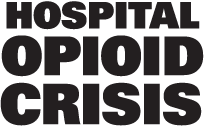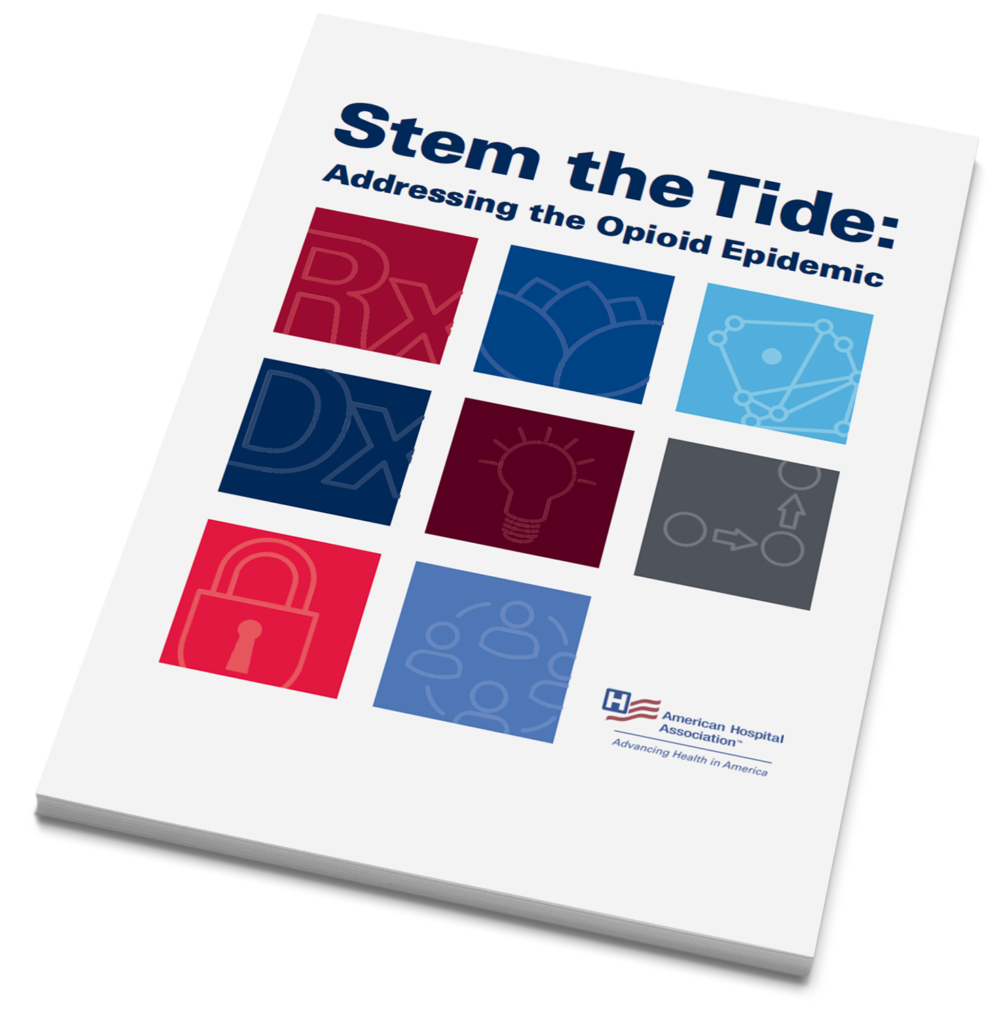
Hospitals Can Lead Us Out
America’s hospitals have served on the front lines of the opioid epidemic for 20 years. More than any other party, they understand the full range of medical, operational, societal and financial issues at stake.
Hospitals remain central to creating a solution to the opioid crisis … and they must actively participate in any negotiated settlement with the opioid manufacturers.
Hospitals’ role in the solution
The effect of an 20-year flood of opioids into American society continues to drive up the number of addiction-related hospital admissions – and sadly, the number of overdose deaths.
But hospitals can lead us out of this crisis. Many have adopted opioid reduction plans, made changes to pain management protocols and developed other practical solutions. With additional funding made available by the opioid settlements, hospitals will be able to further develop and adopt evidence-based treatment practices, such as those outlined by the American Hospital Association:[1]
- Improving access to and utilization of opioid use disease (OUD) treatment services
- Recruiting and retaining addiction trained clinicians and advancing all provider education
- Screening all patients for OUD by understanding the societal and physical risk factors of the most vulnerable patients
- Advancing the practice of non-opioid pain management
- Expanding access to Naloxone
- Initiating medication-assisted treatment (MAT), which uses a combination of medications, counseling, and behavioral therapies
- Addressing variability in prescribing practices by ensuring that clinicians and staff have the appropriate resources at their fingertips, including prescribing guidelines, patient education materials on the risks of opioids, and information on non-opioid pain treatment
- Engaging in outreach to clinicians and all relevant providers to advance a care network for referrals and long-term treatment.
Financing a solution
Though hospitals are vitally important community resources, many operate on the brink of financial distress. The average hospital profit margin in 2018 was just 1.7%[2]; 102 hospitals were forced to close their doors between 2010 and 2019[3]. To successfully implement solutions such as those recommended by the American Hospital Association, hospitals need operating capital – cash. The opioid settlement funds – and the drug makers and distributors that created and profited from this crisis – should provide that cash. Hundreds of hospitals have joined together to raise their voice in the opioid lawsuit discussions. Learn how your hospital can be a part of the dialogue.
Learning from past mistakes
… Unless the state attorneys general structure the settlements in a way that mandates the money be spent to address the opioid problem, it won’t happen … People will keep using these pills and keep getting addicted, and it will be business as usual for the drug companies.
Matthew Myers, president of Campaign for Tobacco-Free Kids
In 1998, the Tobacco Master Settlement Agreement settled the lawsuits of 46 states against the four largest U.S. tobacco companies. The agreement required the companies to pay $246 billion over 25 years as compensation for tobacco-related health care costs in addition to restricting some forms of tobacco marketing and providing funding for a national public education campaign to prevent youth tobacco use.
Yet today:
- States spend less than 3% of their tobacco settlement and tax revenues on programs designed to prevent kids from smoking and help smokers quit, and
- States spend only $1 on tobacco prevention programs for every $14 the tobacco industry continues to spend on its deadly products[4].
Sources:
1 https://www.aha.org/guidesreports/2017-11-07-stem-tide-addressing-opioid-epidemic
2 https://www.modernhealthcare.com/providers/operating-margins-stabilize-not-profit-hospitals-still-vulnerable#targetText=Median%20operating%20margins%20reached%201.7,down%20from%201.8%25%20in%202017.
3
https://www.beckershospitalreview.com/finance/state-by-state-breakdown-of-83-rural-hospital-closures.html
4
https://www.tobaccofreekids.org/what-we-do/us/prevention-cessation

